Explore core Services
Structured Ontologies
We start by designing a governed ontology: classes, attributes, relationships, and boundary cases. The taxonomy, label schema, and examples are written and versioned, then refined in a calibration pilot. Annotators and reviewers work from the same map, not a rough idea in someone’s head.
• Ontology and class definitions documented, versioned, and owned
• Boundary cases, gold examples, and counter-examples for each major class
• Short decision paths for ambiguous, multi-label, or low-signal data
• Change log for guideline updates with date, reason, and owner
Dual-Stage QA
We treat every dataset as if it will be audited later. A primary pass focuses on speed and guideline adherence; a second, independent QA pass focuses on correctness, edge cases, and drift. Disagreements are adjudicated and fed back into the ontology and guidelines so quality is repeatable, not a lucky run.
• Primary labeling against written guidelines and target throughput
• Independent QA pass with rubric and gold set on sampled or critical items
• Disagreements and critical errors logged with reason, correction, owner, and fix-by date
• QA metrics tracked weekly: pass rate, disagreement rate, and time-to-fix
Reviewer Calibration
Reviewers do not “eyeball and approve.” They calibrate. We run regular calibration rounds where multiple reviewers score the same items, compare rationales, and tighten the rubric. The goal is simple: different reviewers make the same decision for the same evidence, and any change to that behavior is visible in the metrics.
• Scheduled calibration sets where reviewers label the same batch and compare rationales
• Rubric updates and clarifications recorded with examples, not just slogans
• Drift detection: shifts in reviewer decisions surfaced alongside IAA trends
• Calibration results fed back into training, guidelines, and gold sets
Feedback Loops
We treat every error and disagreement as a signal, not a one-off mistake. QA findings, model performance, and production issues feed back into the ontology, guidelines, and training. The goal is that each cycle makes the next batch easier to label correctly, not harder.
• QA and disagreement logs reviewed on a fixed cadence (weekly or per batch)
• Common error patterns mapped back to guideline and ontology updates
• Model and production feedback (false positives/negatives) folded into examples and edge cases
• Changes communicated to annotators and reviewers with before/after examples
Human precision at machine scale
We treat accuracy in data labeling as a design problem, not extra effort. We build governed taxonomies, detailed edge-case rules, and reviewer workflows that balance human judgment with consistency. Every project starts from an agreed ontology, label schema, and QA rubric; automation handles the repetition, humans handle the nuance. Dual-stage QA and variance logs turn errors into measurable signals, so labeled datasets ship with both quality and proof you can audit later.
